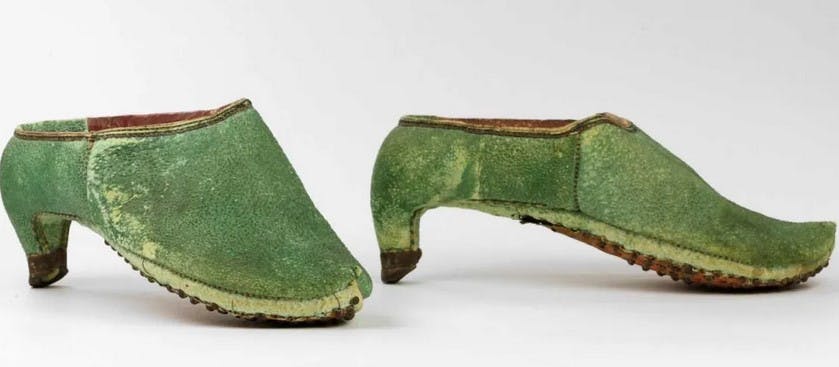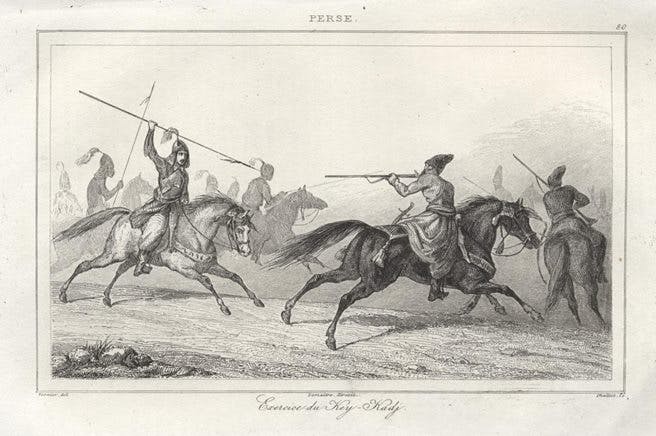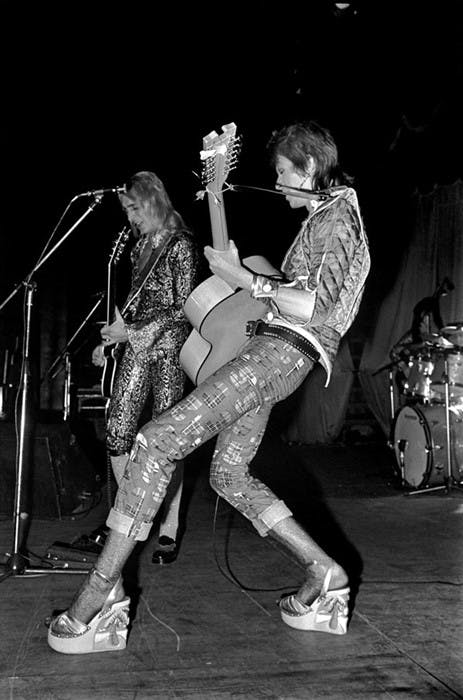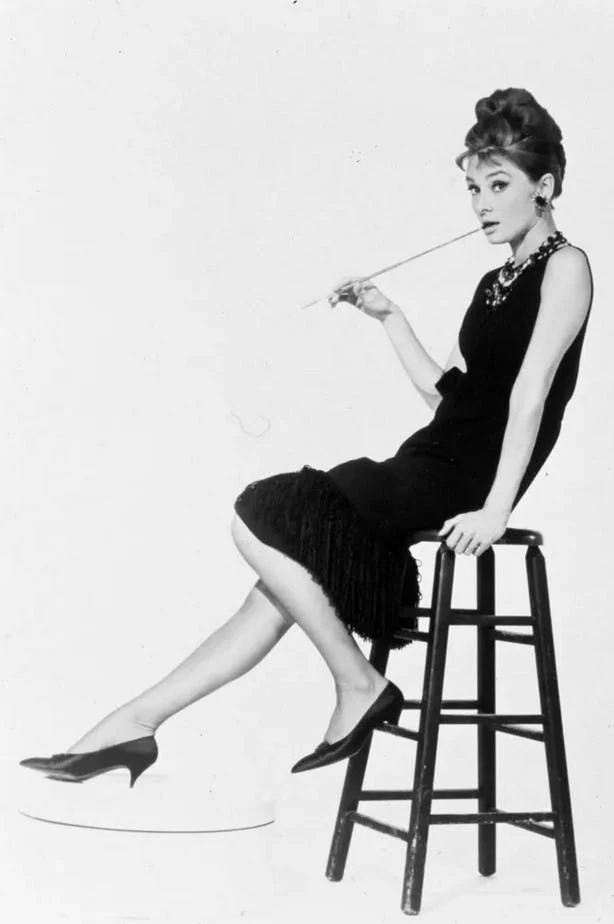HOW IMPRACTICAL FOOTWEAR DENOTED POWER ACROSS HISTORY
Today high heels bring impressions of female elegance and sexuality. Yet the origin of high heels or stilettos actually originated in 10th century Persia worn by male horseback warriors, not court ladies. Throughout history, uncomfortable heels denoted wealth and status across genders and cultures from chopines in Venice to lotus shoes in China. Even cowboys and rockstars later co-opted Cuban heels asserting machismo.

for stability when using bow and arrow on horseback
So how did vertiginous shoes morph from battlefield stability enhancing warrior armor, into symbols of female aesthetic sensuality and vulnerability? Power’s footprints leave surprising imprints and plenty wobbling missteps when tracking the improbable transformation of high heels across centuries.
HEELS TAKE ROOT ON BATTLEFIELDS

Far before the age of pistols, archery and swords ruled combat, requiring optimal rider foot positioning. So 10th century Persian cavalrymen invented heels, clicking into stirrups, for stability drawing bowstrings atop galloping steeds. And so early “high heels” helped elite soldiers aim arrows better without falling off horses to gain battlefield advantages.
Yet, impractical footwear still denoted privilege even off the saddle. Because, owning horses marked Persian nobility in itself during those eras. So by the early 17th century, Persian men sported heels up to 5 inches tall simply conveying elite standing via conspicuous impractical consumption. Of course servants carried masters across streets protecting thin stilt shoes from any scuffing far above dirty streets. Displaying this conspicuous privilege mattered most.

Published in L’Univers …. La Perse, Paris, 1841
ROYAL STYLE GOES VIRAL FROM EAST TO WEST
When Persian diplomats dazzled 17th century European dignitaries in rich brocaded silver-heeled slippers and riding boots, exotic fashion trends went viral rocketing worldwide along trade routes. Aristocrats and merchants soon coveted Persian footwear and textiles for themselves as exotic luxuries befitting their stature.
Because, back then, upper-class men wore flowing robes and tights highlighting legs rather than concealing limbs within suits and trousers like modern times. So special heels attracting stares towards calves and quads reflected styling priorities promoting male beauty and social rank. Back then, men’s fashion often targeted objectifying male bodies more explicitly than female counterparts do in modern times.
Henry of Valois, Poland king elected in 1573 wore famous “Persian” red heels while German and Russian nobles too desired the lift trend to denote monetary and political means. Of course the signature red paint indicated owners remained wealthy enough for servants preventing mud besmirching heel bottoms outdoors. So heels persisted symbolizing privilege, leisure and courtly wealth for elite men dominating European affairs throughout the 1600s by policy more than fashion alone.

THE SUN KING RISES…ON RED HIGH HEELS!
The biggest political power move anchoring high heels as masculine status symbols arrived courtesy of an actual king – Louis XIV, known as France’s Sun King for immense wealth and influence throughout Europe during his long reign until 1715.
In 1670 King Louis passed an edict that legally restricted wearing red heels to members of his nobility and inner circle only. The Sun King preferred red heels beating Christian Louboutin by over 300 years. The red color denoted that owners commanded authority and means with higher saturated shades conveying senior rankings. Louis himself wore heels often spanning five inches high dwarfing subjects and rivals politically beneath the monarch’s lifts.
So for nearly 50 years, the sound of clacking stride identified advisers, generals and visiting diplomats within French King Louis XIV’s trusted elite brigade. Suitors and sycophants curried special favor gifting exotic heels to gain inside access and influence surrounding His Highness. Again, impractical shoes fitting tighter than Cinderella’s slipper mattered little next to absolute power within immediate reach.
FEMINIZING TRENDS LOOSE BALANCE
Yet stylistic creep inevitably tipped cultural scales as women sought sharing similar perks afforded by showy heels and flowing formal wear. And men gradually switched towards more practical Enlightenment Age footwear and business suits standardizing modern offices today. Almost suddenly, heels conveyed feminizing frivolity rather than admirable virility by 1800.

Bata Shoe Museum, Toronto, Canada
So women increasingly donned thinner, less stable stacked heels aspiring nobility airs – at least visually. However female children also endured horrific foot binding traditions across status levels in feudal China by then too. Lotus shoes deliberately broke toes sideways creating nearly useless feet besides toddling on tiptoes for life.
As women assumed higher heels and skinnier shoes, injury risks accelerated compounding vulnerability literally crippling mobility independence. Soon overweight Victorian skirts required canes supporting precarious balance teetering atop tiny feet. High heels transmuted from battlefield stability into symbols for female helplessness and superficial elegant appearance over function or comfort by the mid-1800s.
Of course working class populations like American slaves couldn’t afford fashion posturing through ridiculous shoes. But middle class anxiety and extravagance frequently overlapped on the path towards modern consumerism and its status chasing habits. Again, identity displays mattered more than practical concerns towards efficiency or budget.

RETURN OF THE CUBAN HEEL!
Odd exceptions always exist defying high-low heel gender assumptions however. Although aristocratic men ceased wearing heels by 1800, cowboy boots retained elevated heels for securing stirrups echoing ancient Persian riders launching the style.
Frontier ruggedness values persisted as rock music bands later strutted stage aplomb in heeled Chelsea boots by the 1960s. Even glam David Bowie intentionally blurred gender messaging across fame seeking experimentation and personal expression priorities beyond fashion status itself.

So today, are vertiginous heels feminine by default? Short answer: not necessarily! Their surprising origin of high heels and their evolution proves impractical footwear historically channeled identity ideals beyond wisdom or comfort – signaling special status, garnering community support.
High-heels required servants safeguarding elite men once signaling luxury before binding women symbolizing oppression across cultures. Neither case was practical by any means, but sure did make a statement.
Yet co-opting heels still proclaimed confidence, facing fears among rockstars or cowboys blazing distinct trails. So perhaps wearing heels represents personal confidence and self-expression beyond just following expected social norms when the choice comes from inner freedom instead of pressure to conform outwardly. Either way, high heels still turn heads questioning balance and assumptions centuries later!

in her “Breakfast at Tiffany’s” costume, in 1961.



